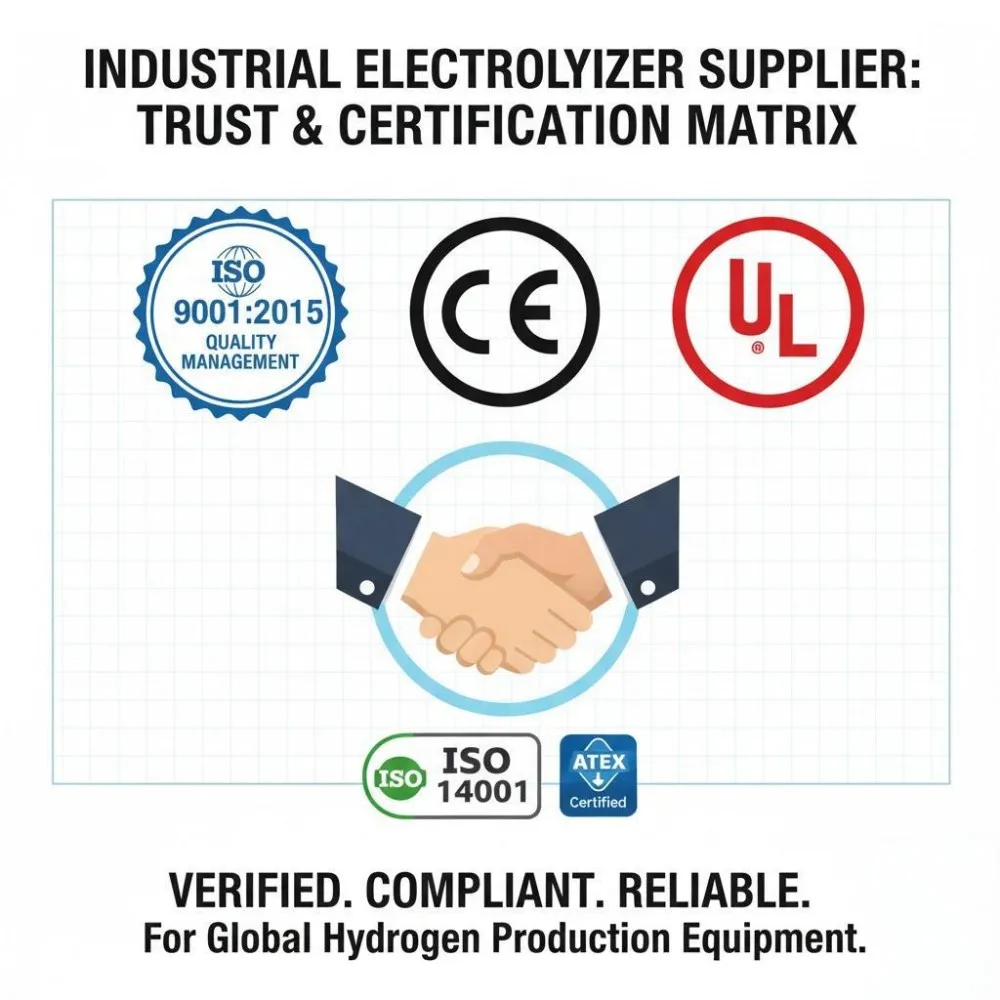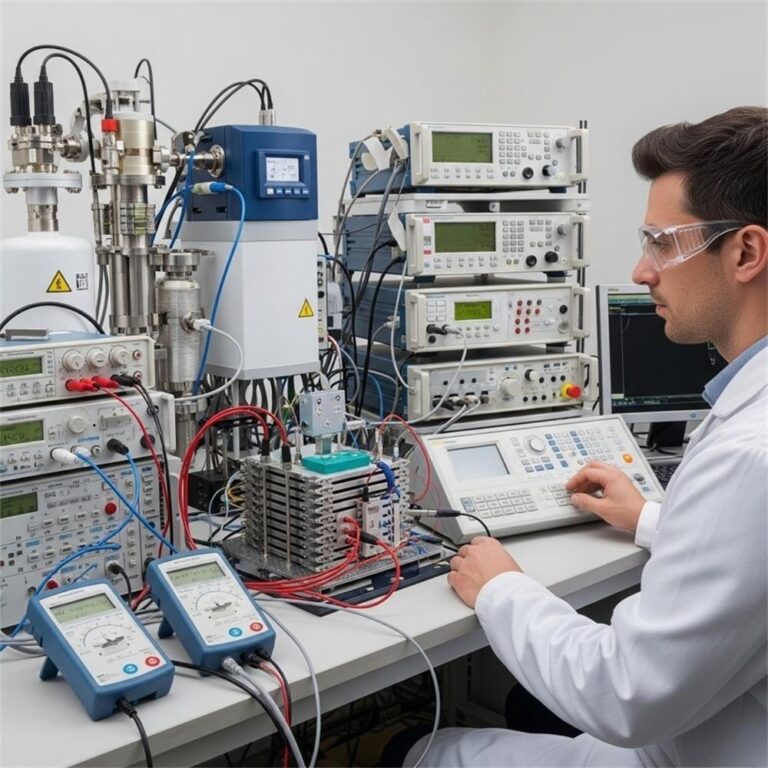Compare 1000ml and 2000ml electrolytic hydrogen gas generators. Understand applications, costs, and selection criteria to choose the ideal generator for your research or industrial needs.
Introduction: Understanding Electrolytic Hydrogen Generators
Electrolytic hydrogen generators are devices that produce hydrogen gas by splitting water (H₂O) into hydrogen (H₂) and oxygen (O₂) using electricity. This process, known as electrolysis, has become a pivotal technology in the shift toward clean and sustainable energy. As industries strive to reduce their carbon footprints, electrolytic hydrogen has emerged as a key player in energy storage, fuel cells, and various research and industrial applications.
One of the most important considerations when selecting a hydrogen gas generator is its capacity—measured in milliliters per minute (ml/min). The right capacity ensures not only operational efficiency but also long-term reliability and cost-effectiveness. For enterprise buyers and B2B decision-makers, understanding the capabilities of 1000ml vs. 2000ml hydrogen generators is essential for aligning equipment performance with specific operational demands.

Applications for Different Capacities (1000ml vs. 2000ml)
1000ml Electrolytic Hydrogen Generators
Best For:
- Laboratory Research: Low-volume hydrogen supply is sufficient for experiments requiring intermittent gas flow.
- Educational Demonstrations: Safe and compact for classroom or university lab use.
- Small-Scale Fuel Cell Testing: Ideal for proof-of-concept testing or prototype evaluations.
Typical Use Cases:
- Gas Chromatography (GC): Serves as a reliable carrier gas for analytical instruments.
- Sensor Calibration: Offers precise and consistent hydrogen flow for gas detectors and sensors.
- Scientific Experiments: Delivers pure hydrogen for controlled reactions in confined environments.
Benefits:
- Compact Form Factor: Fits seamlessly into small lab spaces or benchtops.
- Lower Capital Cost: Affordable option for institutions or startups with limited budgets.
- User-Friendly: Simplified controls and setup, often requiring minimal training.
2000ml Electrolytic Hydrogen Generators
Best For:
- Pilot-Scale Industrial Testing: Supports moderate industrial processes needing constant gas supply.
- Continuous Operation Environments: Well-suited for labs or production lines that require uninterrupted hydrogen flow.
- Larger Analytical Instruments: Can support multiple instruments simultaneously or one high-demand system.
Typical Use Cases:
- Metal Treatment & Hydrogen Annealing: Supplies hydrogen for surface finishing or reduction processes.
- Semiconductor Manufacturing: Enables safe, high-purity hydrogen for etching and deposition.
- Power Plant Cooling Systems: Used for generator cooling in high-efficiency electricity production setups.
Benefits:
- Higher Flow Capacity: Delivers double the output compared to a 1000ml generator.
- Enhanced Durability: Typically built with industrial-grade materials for long-term operation.
- Scalable Integration: Can be integrated into broader hydrogen infrastructure or smart factory ecosystems.
Technology Comparisons
Electrode Materials and Design
The performance and longevity of an electrolytic hydrogen generator are heavily influenced by the materials used in its electrodes.
- Platinum and Iridium: Common in premium systems; known for high catalytic activity and corrosion resistance.
- Nickel-Based Alloys: Offer a cost-effective alternative with decent performance, especially in alkaline systems.
Design Impact: Advanced electrode geometry can improve surface area contact, leading to faster hydrogen production and reduced energy consumption.
Electrolyte Types
- Alkaline Electrolytes (KOH, NaOH): Economical and well-established but require regular maintenance.
- Proton Exchange Membranes (PEM): Preferred in high-purity applications due to minimal contaminants and compact design.
Considerations:
- PEM systems often yield purer hydrogen.
- Alkaline systems are robust but require handling of caustic materials.
Safety Features
Modern generators come equipped with a range of safety systems:
- Pressure Sensors: Ensure internal pressure stays within safe limits.
- Leak Detection Systems: Trigger automatic shutdown if hydrogen leaks are detected.
- Over-Temperature Protection: Prevents system damage by halting operation during overheating.
These features are especially critical for B2B buyers where safety compliance is non-negotiable.
Cost Analysis
Initial Investment
| Capacity | Approx. Cost Range (USD) | Key Cost Drivers |
|---|---|---|
| 1000ml | $3,000 – $7,000 | Material quality, purity level, brand |
| 2000ml | $6,000 – $12,000 | Higher output, more robust components |
Operating Costs
- Electricity Consumption: Roughly doubles from 1000ml to 2000ml.
- Maintenance: Includes replacing filters, electrolytes, and periodic calibration.
- Consumables: PEM systems have lower ongoing chemical costs vs. alkaline systems.
Total Cost of Ownership (5-Year Estimate)
| Capacity | Estimated Total Cost | Notes |
|---|---|---|
| 1000ml | $8,000 – $12,000 | Lower usage environments |
| 2000ml | $14,000 – $20,000 | Higher duty cycle, continuous use |
Selection Criteria: How to Choose the Right Generator
Hydrogen Purity Requirements
Most lab or industrial applications demand 99.999% purity (often called “five nines”). PEM-based systems are optimal here, while alkaline may suffice for less critical tasks.
Flow Rate and Pressure Needs
Choose a generator that aligns with:
- Peak Hydrogen Demand: Always select a unit with a slightly higher capacity than your maximum flow requirement.
- Back Pressure Compatibility: Ensure the output pressure suits the connected instruments or processes.
Duty Cycle and Reliability
- Continuous Use: Go for industrial models with cooling fans, metal housings, and enhanced durability.
- Intermittent Use: Lab-grade units with automatic start/stop functions are ideal.
Safety Certifications
Ensure the unit meets at least one of the following:
- CE Certification (Europe)
- UL Mark (USA)
- ISO 22734 Compliance (Hydrogen generators for industrial and laboratory use)
These certifications protect both investment and personnel.
Product Recommendations (Optional)
| Model Name | Capacity | Key Features | Best For |
|---|---|---|---|
| H2-PureLab 1000 | 1000ml | PEM system, 99.9999% purity, compact | University Labs, GC, R&D |
| H2-Pro Industrial 2000X | 2000ml | Alkaline, high flow, auto-safety | Industrial Labs, Continuous Use |
| HydroGen Elite 2000PEM | 2000ml | PEM, touchscreen, remote monitoring | Clean Energy Projects, Semiconductors |
Frequently Asked Questions (FAQs)
Q1: What’s the main difference between 1000ml and 2000ml electrolytic hydrogen generators? A1: The primary difference is output capacity. 1000ml units are ideal for low-demand settings, while 2000ml units support higher, continuous hydrogen needs.
Q2: Is PEM or alkaline better for hydrogen production? A2: PEM is better for high-purity applications but comes at a higher cost. Alkaline systems are more affordable and suitable for general industrial use.
Q3: Are these generators safe for indoor use? A3: Yes, provided they have built-in safety features like leak detectors, pressure sensors, and automatic shut-off mechanisms.
Q4: How long do hydrogen generators last? A4: With proper maintenance, most quality hydrogen generators last 5–10 years or longer.
Q5: What kind of maintenance is required? A5: Routine tasks include checking electrolyte levels, cleaning filters, and periodic recalibration.
Q6: Can a 2000ml generator be used in place of a 1000ml model? A6: Technically yes, but it may be overkill for smaller tasks and could lead to higher operating costs if not matched to demand.
Conclusion
Choosing between a 1000ml and 2000ml electrolytic hydrogen generator comes down to understanding your specific application needs—particularly flow rate, hydrogen purity, operating environment, and cost sensitivity. Smaller capacity units are efficient for research and educational use, while higher capacity systems are built for industrial and continuous applications. By aligning technical requirements with capacity options, enterprise buyers can ensure long-term reliability, compliance, and cost-effectiveness.
🔍 For a tailored recommendation or a personalized quote, contact us today to speak with one of our hydrogen solutions experts.







